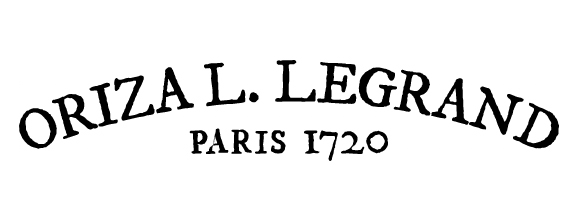- Oriza L. Legrand perfumes and colognes:
Country:France
Main activity:Fragrances
Brand website:link
Niche designer
House Oriza L. Legrand was, in the 19th century, a purveyor to the royal courts of France, England, Italy, and Russia.
For instance, creations for the Russian imperial court includedAux Violettes du Czar(1862),Violettes du Czar pour le Mouchoir(1896, pictured),Doubles Violettes du Czar(1900), andParfum de l'Aigle Russe(1907).

The perfume house's name is a fusion of two entities: Maison Oriza and L. Legrand. Maison Oriza was founded in 1720 by the renowned royal perfumer Jean-Louis Fargeon. The name "Oriza" is a play on words combining "or" (gold) and "riz" (rice)—the latter referencing the rice powder used for wigs and cosmetics. In 1811, Louis Legrand acquired Maison Oriza from Fargeon's heirs, along with its archives of perfumes and cosmetics, and opened a shop on Rue Saint-Honoré. Half a century later, in 1860, he passed it to his younger, more dynamic partner, Antonin Raynaud.
Under Antonin Raynaud's leadership, the company launched the world's first perfume line,Parfumerie Oriza, in 1879. Each perfume in this collection was accompanied by matching cosmetic products, unified by both name and packaging design. While such a strategy seems intuitive to modern marketers, Raynaud was a pioneer in 1879, ahead of competitors like Houbigant and Lubin. The line's success inspired Raynaud to rebrand the company as Oriza L. Legrand. In 1887, Oriza L. Legrand patented and produced the world's first solid perfume (Essence Oriza Solidifiée). The entire manufacturing process—from distilling and macerating perfume ingredients to labeling, from soap production to grinding rice for powder—was centralized at a factory in Levallois-Perret.
In the spring of 1890, when nearly every arrondissement in Paris boasted perfume markets offering fine scents at lower prices (sound familiar?), Oriza L. Legrand opened a new luxury boutique on Place de la Madeleine, reaffirming its commitment to authentic luxury.
The house participated successfully in international exhibitions, earning regular acclaim—from a bronze medal at the 1867 Paris Universal Exhibition to the Grand Prix at the 1900 edition.
From the mid-19th century onward, Oriza L. Legrand collaborated with Baccarat, the esteemed crystal makers. Baccarat crafted not only perfume bottles for royalty but also several genuine crystal masterpieces.
Aligning with the era's fashion trends, the company created numerous violet-scented fragrances (as mentioned earlier), along with amber-based scents likeFin Comme l'Ambre(1913) andL'Ambre(1920), the chypre fragranceChypre Mousse(1920), and oriental perfumes such asKadidja(1920) andVenise(1925).
Turning to the present day, Oriza L. Legrand has experienced a revival, with four fragrances reintroduced under their original early 20th-century names:Relique D'Amour(1900),Rêve d'Ossian(1905),Oeillet Louis XV(1909), andDéjà Le Printemps(1920).
Our fragrance database includes 30 perfumes from Oriza L. Legrand, an established perfume house with creations spanning from 1909 to 2023. The perfumer behind these scents is Hugo Lambert.
